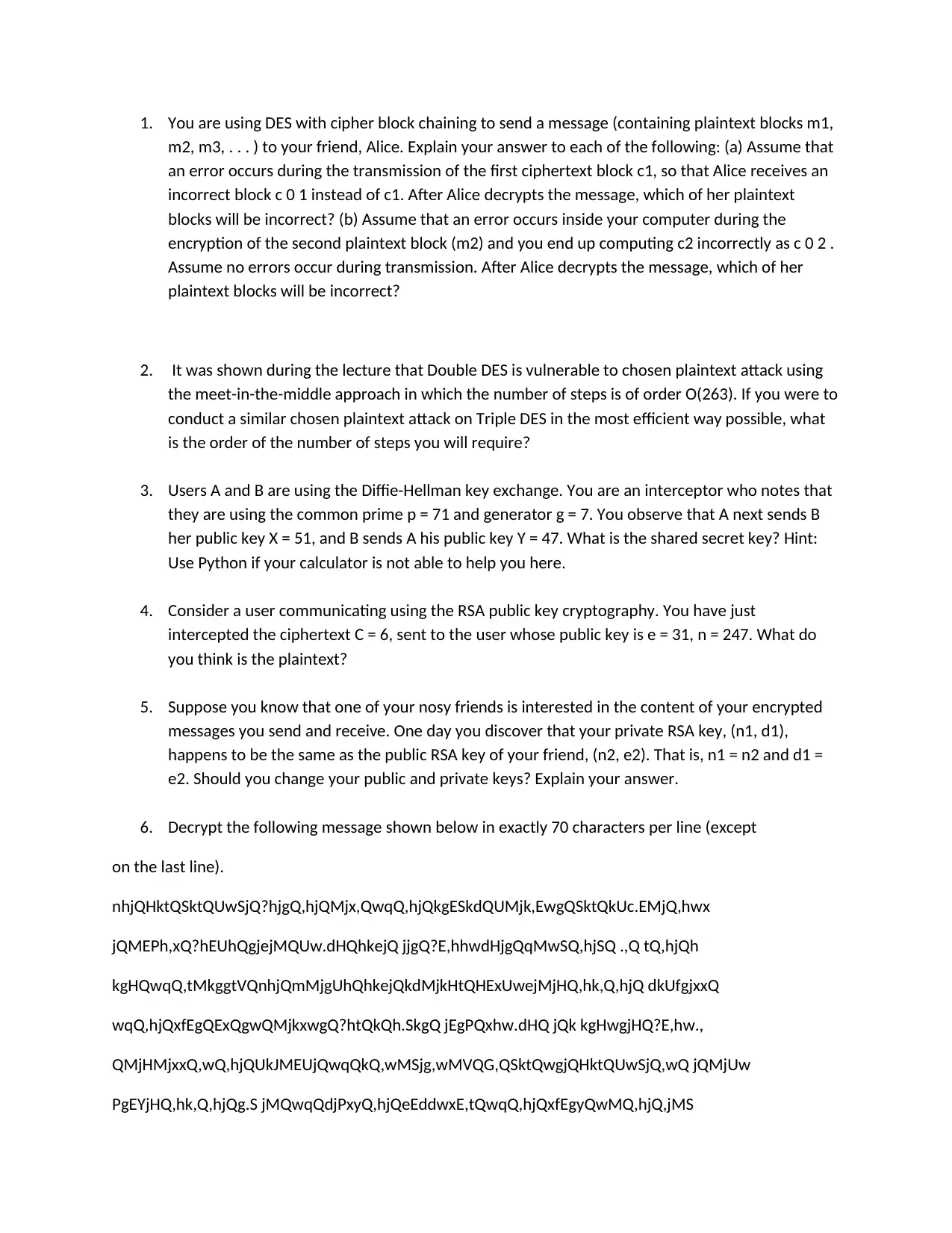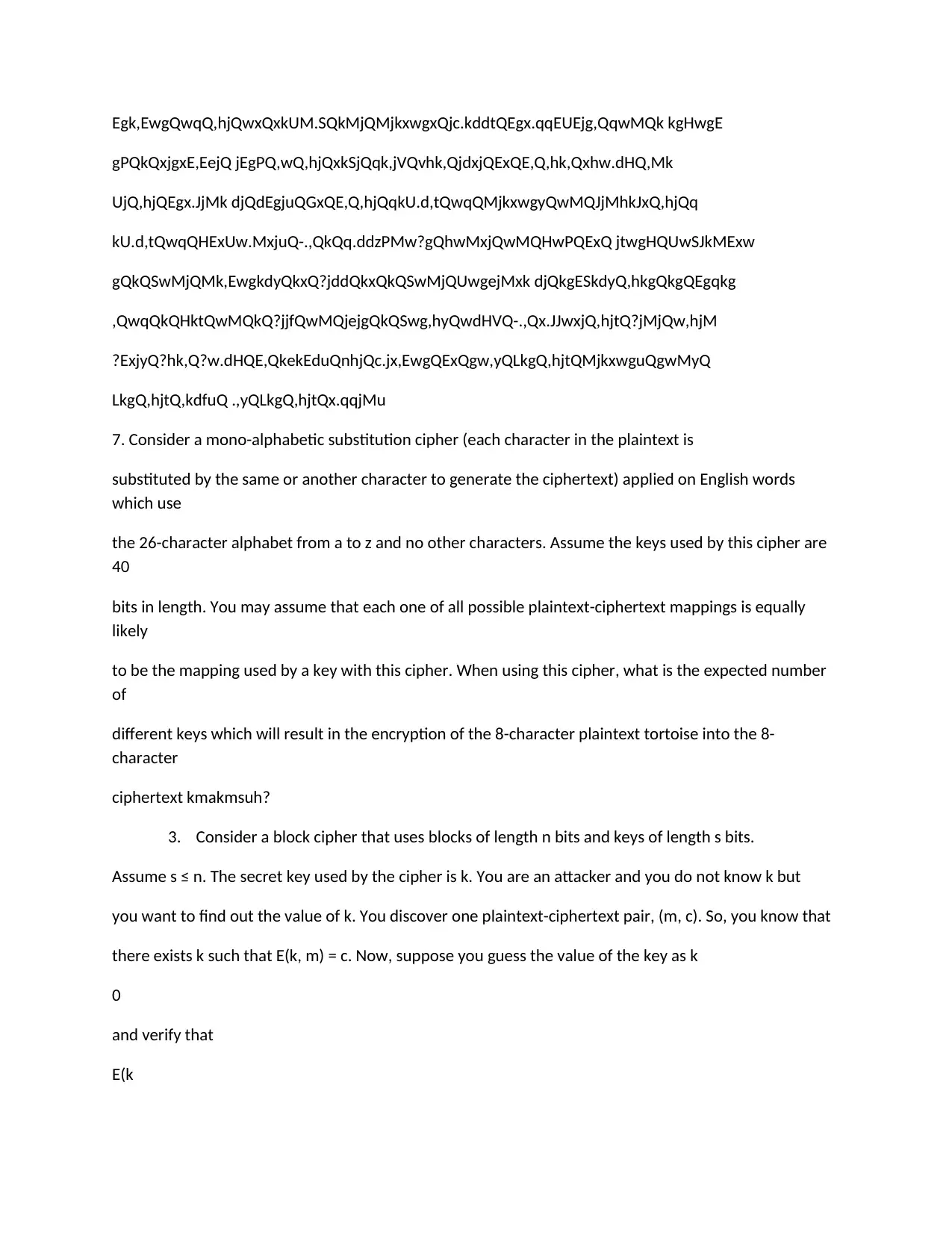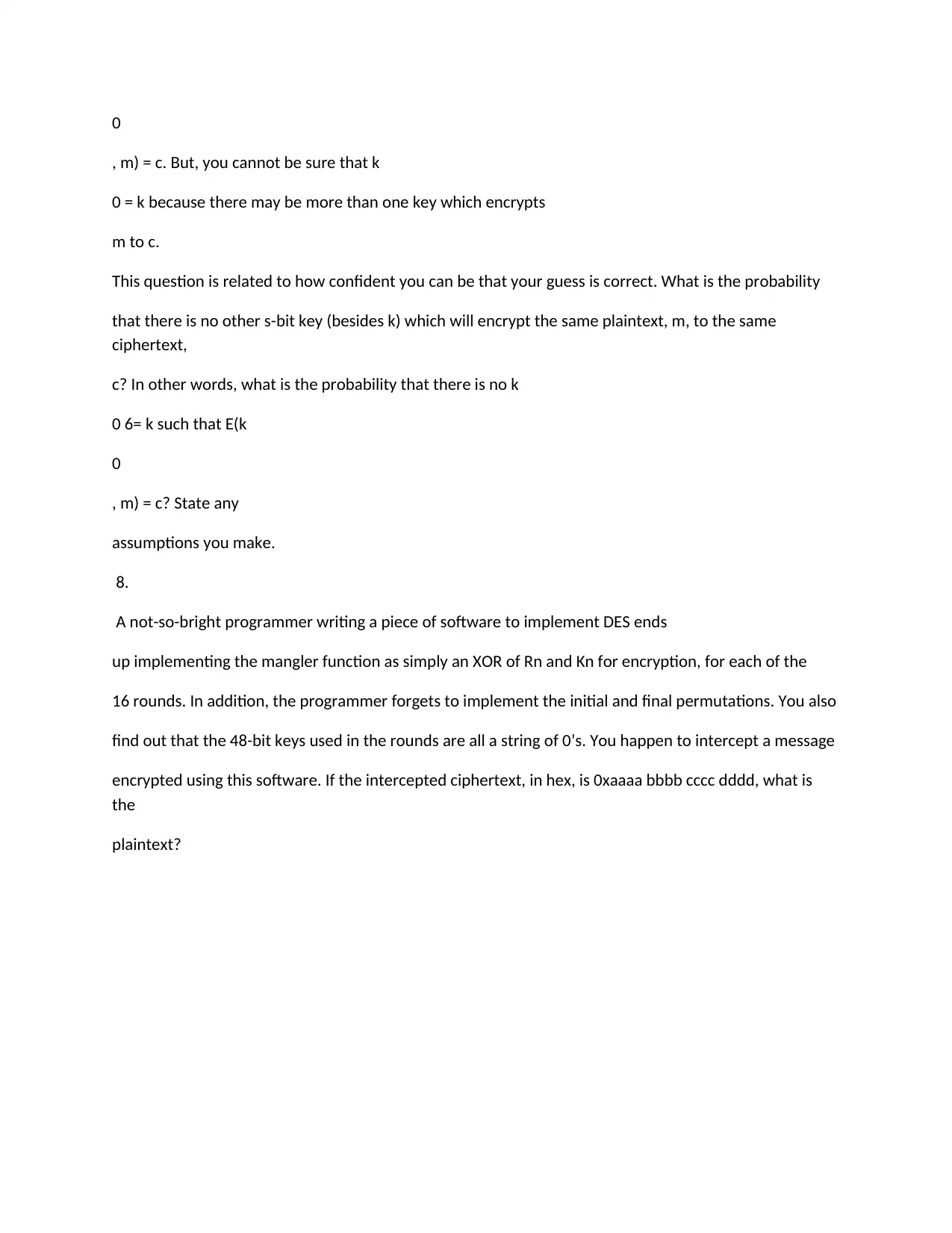Cryptography Homework
VerifiedAdded on 2019/09/25
|3
|1047
|51
Homework Assignment
AI Summary
This assignment covers various aspects of cryptography. It begins with questions on Data Encryption Standard (DES) and its use with cipher block chaining, exploring the effects of transmission and encryption errors on decrypted plaintext blocks. The assignment then delves into the vulnerability of Double DES and the efficiency of attacking Triple DES using a chosen plaintext attack. A Diffie-Hellman key exchange problem is presented, requiring the calculation of a shared secret key using given parameters. RSA cryptography is explored through a ciphertext decryption problem and a scenario involving a user's private key being identical to a friend's public key. The assignment also includes a decryption problem involving a monoalphabetic substitution cipher and a question on the probability of a unique key in a block cipher. Finally, a problem involving a flawed DES implementation is presented, requiring the determination of the plaintext given a ciphertext.
1 out of 3










![[object Object]](/_next/static/media/star-bottom.7253800d.svg)